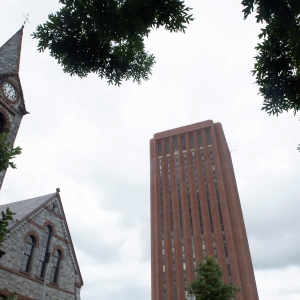Guest columnist Stephen T. Smith: 24 hours in the ER
| Published: 01-21-2023 10:58 AM |
It’s not uncommon to consider a visit to the emergency room an experience best avoided. They are often incredibly busy places and the emergencies are often very real. This is especially so during the week between Christmas and New Year’s Day. Throw in the latest versions of COVID-19, the flu, and RSV, on top of the usual traumas, and things can get beyond busy quickly.
My need to visit arose in the middle of our recent holiday week when, after several days of nausea, frequent upchucking, and increasingly painful abdominal swelling, I decided that I had something more than a pesky stomach bug and headed to the ER at Cooley Dickinson Hospital. It’s a nice place as far as ER’s go. My spouse and I are repeat customers and I’m not writing to criticize or complain about my time or treatment there. I just want to share this particular experience.
When I got there around 8:30 that morning, I was pleased to see only 10 to 15 people in the waiting area. I was quickly able to sign in, describe my symptoms, and plunk myself in one of many empty chairs. Three hours later, the waiting area and adjacent hallway were packed by 40 or more of us and I was still waiting to be called into the treatment area. By then I was feeling a lot more poorly than when I arrived and decided it was time to either get re-triaged or leave. I admit that the latter was not a rational option.
So decided, I went back to the intake window and politely explained my situation and my options as I saw them. To her credit, this overworked person hesitated for a moment, then gestured to me with a “just a minute” raised finger. As I turned to go back to my chair, I heard the double door to the treatment cubicles open and she motioned for me to follow her.
Upon entering, I quickly confirmed that she and the rest of the ER staff had been very busy that morning, although obviously unable to stay abreast of the influx. All of the cubicles were apparently full as they were now putting people on gurneys in the hallways — myself included. That was my fate for the next several hours and I was grateful for that. During that time someone decided what was to be done with me and, along with more waiting, IVs were inserted for hydration and nourishment, blood was drawn and quickly tested, a CT scan was taken, and the results posted on the patient portal well before anyone had time to discuss them with me. Fortunately, although well into senior status, I had my smarter-than-me phone with me and even remembered my portal password.
An hour or so later, I was moved to an inside treatment room, where I learned that I was not alone in reading the test results. A veteran ER nurse, clearly harried with the need to perform yet another unpleasant and important task, entered with an assistant and quickly informed me that they were there to insert a long “thin” suction tube into my stomach through my nose. That was not an experience I would wish on anyone, with only a few exceptions. Turns out that the procedure is standard for initial treatment of what the CT scan had revealed as a small bowel obstruction.
In the early evening, things got unexpectedly interesting. The room shrank to half its already small size with the drawing of the divider curtain a few inches from my gurney, a precursor to the arrival of an elderly, likewise gurneyed woman. Over the next few hours, I learned from the conversation of the patient with 2 to 4 family members at any given time, her oncologist, and the chief of emergency medicine that she was there to receive a blood transfusion, given to alleviate the symptoms of her leukemia. Given the number of her visitors, the status of the medical staff attending her, and her undeniable verbal refinement, I deduced that she was likely a person of significant standing in the community. This was buttressed by the number of her visitors who were able to stay and chat with her until 11 p.m. when she was able to leave.
The welcome quiet quickly evaporated with the arrival of an elderly man, also attended by family. An ER doctor was soon present as the man was in some distress, suffering from late-stage pancreatic cancer. I heard the doctor describe his concern over the patient’s rapid heart rate and declining blood pressure, and the urgent need to address these concerns. Seconds thereafter, the urgent treatment — a defibrillator shock — was administered. I knew this from the man’s loud shout and the sound of his back slapping back down on his gurney. The first shock didn’t improve things and, following a brief doctor-patient-family discussion, a second jolt was administered, alleviated somewhat by pain medication beforehand. When the second attempt also appeared not to be working, the young sounding physician began a thorough description of end-of-life choices with the patient and his family. I was impressed with the discussion and patience of the doctor who clearly understood the importance of this sensitive, difficult task. Unfortunately, neither the family nor the patient were able to decide.
Article continues after...
Yesterday's Most Read Articles
As the discussion was winding down, the doctor commented that the patient’s heart rate and pulse were starting to move in the right direction and the patient was transported shortly thereafter, presumably to the ICU. I fell asleep, but not before thinking about the choice I would make under similar circumstances. I concluded that I was not yet ready to decide, although now more fully aware of the uncertain miles ahead to a certain ending. Later that morning, one day after I had arrived, I was moved upstairs, grateful to know what was wrong, to be getting treatment, and to still be on the sunlit side of the clover. On the way to my room my gurney driver told me that the ER was still jammed to overflowing and I wondered how they would cope with the next 24 hours.
Stephen T. Smith lives in Worthington where he serves on the Selectboard. He is a former attorney and a retired professor of criminal justice.
 Columnist Olin Rose-Bardawil: American dream out of reach for many
Columnist Olin Rose-Bardawil: American dream out of reach for many Tony Giardina: Faith and inclusion
Tony Giardina: Faith and inclusion Martha Jorz: Stop supporting UMass and Raytheon
Martha Jorz: Stop supporting UMass and Raytheon Doron Goldman: Israel's situation is complicated
Doron Goldman: Israel's situation is complicated
